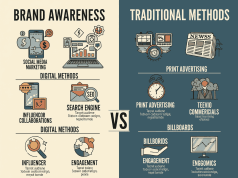As we step into 2025, the marketing landscape is undergoing a significant transformation driven by advancements in technology, particularly through voice search and smart devices. These innovations are redefining how consumers interact with brands and search for information, compelling marketers to adapt their strategies. Here’s a closer look at the trends shaping this evolution.
The Rise of Voice Search
Increased Adoption of Voice-Activated Devices
With devices like Amazon Echo, Google Home, and Apple’s HomePod becoming staples in households, voice search has seen exponential growth. According to industry reports, approximately 70% of smartphone users rely on voice search at least once a week. This trend opens up new avenues for brands to connect with consumers in a more personalized and efficient manner.
Natural Language Processing (NLP)
As voice recognition technology continues to improve via Natural Language Processing (NLP), search queries are becoming more conversational. Consumers are moving from typing "best pizza near me" to asking, “What’s the best pizza place around here?” This shift means marketers must pivot their SEO strategies, focusing on long-tail keywords and natural language to optimize their content effectively.
Smart Devices and the Internet of Things (IoT)
Seamless Integration
Smart devices are not just limited to voice assistants. The Internet of Things (IoT) has enabled a network of interconnected devices—from smart refrigerators to wearables—that provide marketers with rich data about consumer habits and preferences. This data can be harnessed for targeted marketing campaigns, ultimately delivering personalized recommendations.
Enhanced Customer Experiences
Consumer expectations are evolving, and brands must adapt to offer seamless experiences across multiple devices. For example, a smart home system could remind users about a grocery list and provide recipes based on what’s available in their pantry. Marketers need to understand these interactions and tailor their messaging accordingly.
Marketing Strategies for Voice Search and Smart Devices
Optimizing for Voice Search
Conversational Content: Create content that answers common questions in a conversational tone. Use FAQs, lists, and straightforward answers to enhance voice search compatibility.
Local SEO: Emphasize local SEO strategies to capture voice searches with location-based queries. Optimize Google My Business profiles and ensure NAP (Name, Address, Phone number) consistency across platforms.
- Structured Data: Implement schema markup in your website code to enhance visibility in search results and help smart devices understand your content better.
Leveraging Smart Device Data
Data-Driven Insights: Use data from smart devices to inform product development and marketing strategies. Understanding consumer behavior can guide decision-making and lead to more effective campaigns.
Personalized Marketing: Implement AI and machine learning to deliver personalized content and offers based on consumer interactions with their smart devices. This can significantly enhance engagement and conversion rates.
- Voice Commerce: Embrace the growing trend of voice-assisted shopping. Ensure your e-commerce platforms are optimized for voice commands to facilitate frictionless transactions.
Challenges and Considerations
While the prospects of voice search and smart devices are promising, several challenges need addressing:
Privacy Concerns: Consumers are becoming increasingly wary of data privacy. Marketers must navigate regulations, like GDPR and CCPA, while fostering transparency and trust.
Evolving Technology: The rapid pace of technological change can make it challenging for marketers to keep pace. Continuous learning and adaptation will be crucial to stay ahead.
- Content Fragmentation: With consumers accessing information across various platforms, marketers must ensure consistent branding and messaging, regardless of the device used.
Conclusion
As we look toward 2025, voice search and smart devices are set to revolutionize the marketing landscape. By embracing these technologies and adapting strategies accordingly, brands can create engaging, personalized experiences that resonate with today’s consumers. The key to success will lie in understanding the unique dynamics of voice interactions and leveraging the wealth of data that smart devices offer. Brands that navigate this shift effectively will position themselves at the forefront of the evolving market, ensuring a strong connection with their audience.









